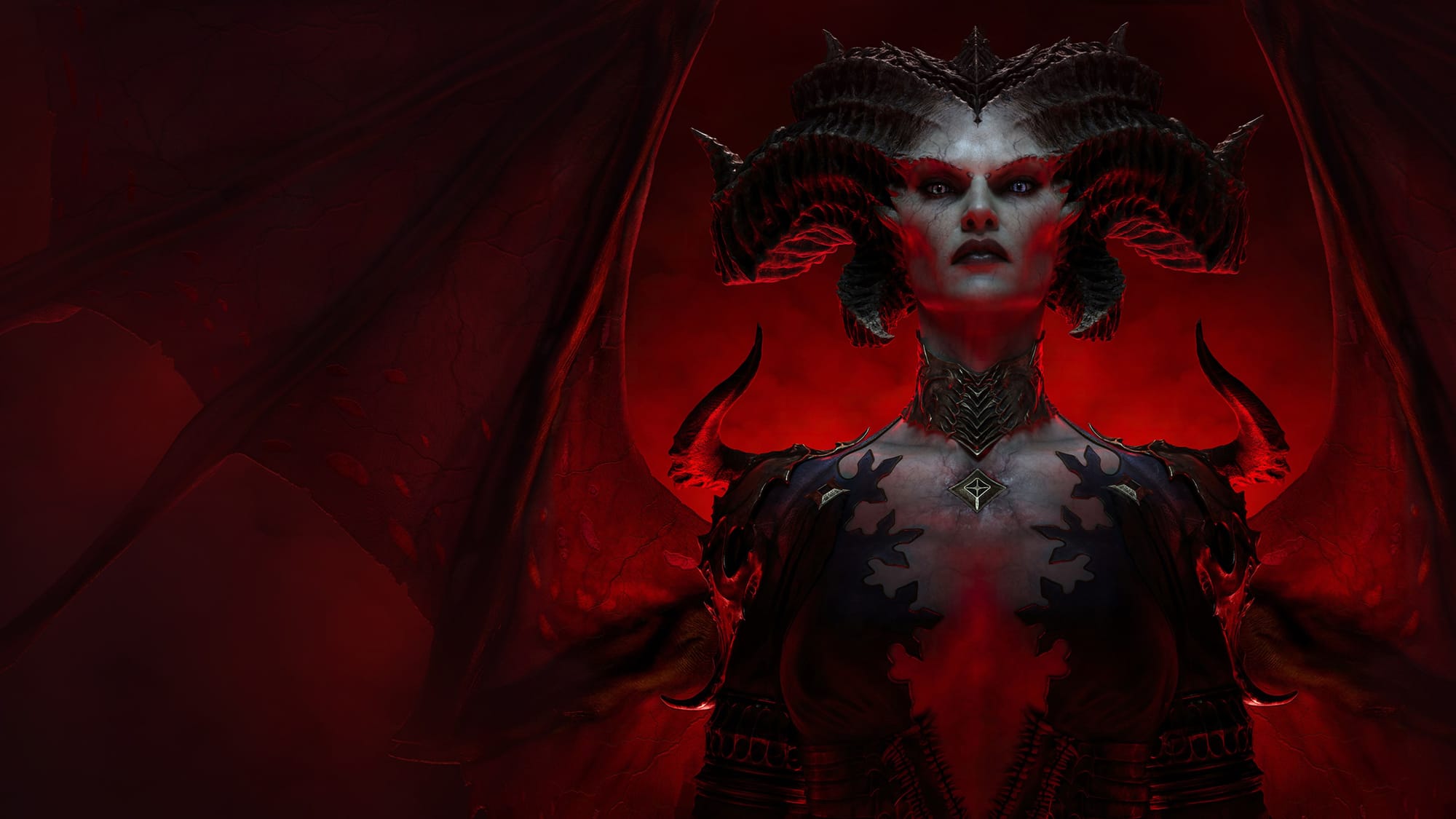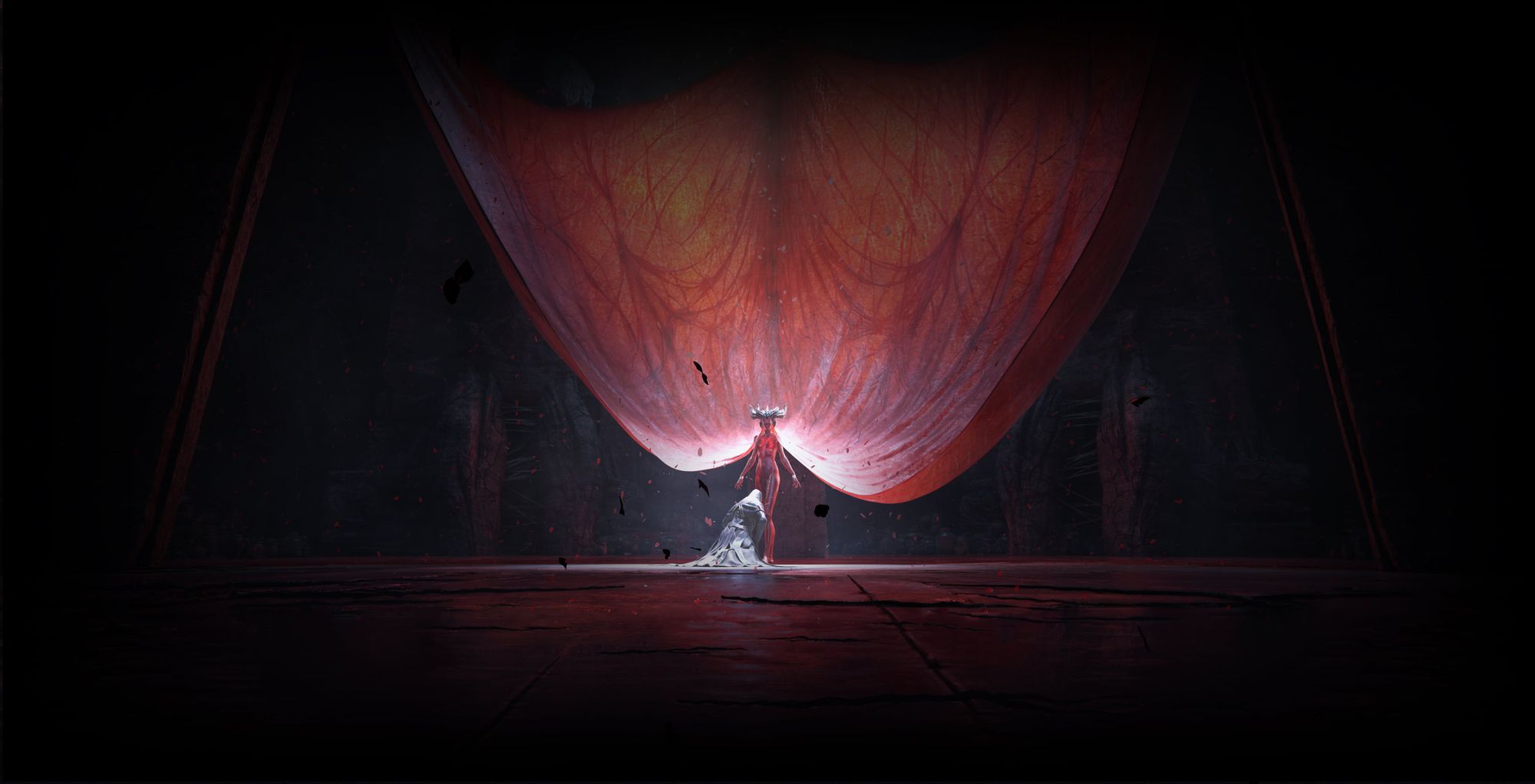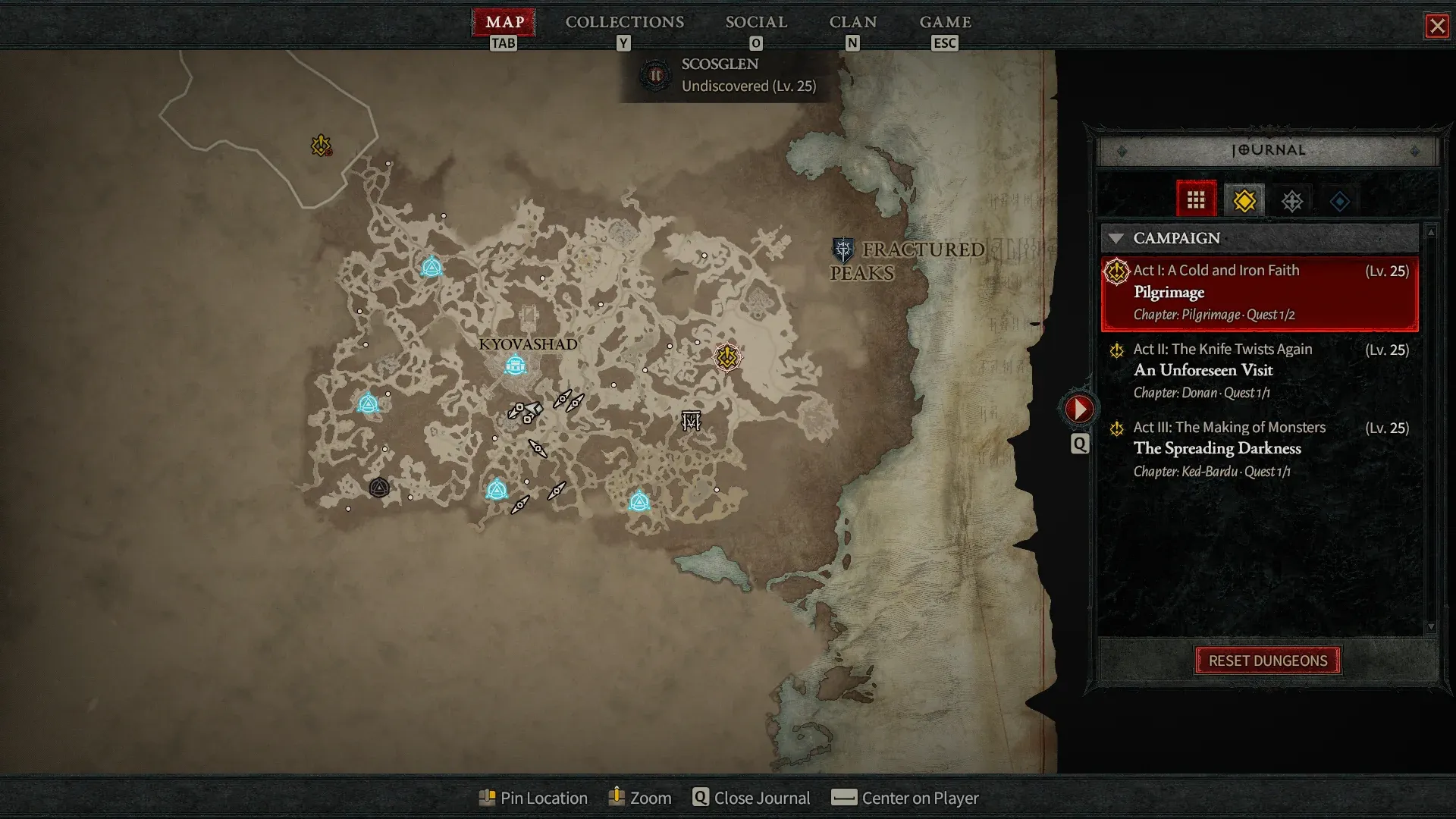Musings on the Diablo IV Open Beta
After years of teasing, gamers finally get their first taste of Diablo IV - and feelings are mixed

Way back in 1995, I played Blizzard's Warcraft II: Tides of Darkness for the first time. On the CD-ROM for Warcraft II was a preview for one of Blizzard's upcoming games: Diablo. As has always been the case with Blizzard cinematics, the trailer for this mysterious new title was enthralling, exciting, and brilliantly produced, culminating in the terrifying howl of the series' titular villain.
The series has come a long way since then and has diverged widely from the original design pitch from Condor Games, the studio that would eventually be acquired by Blizzard Entertainment and renamed Blizzard North. 2001 saw the hugely successful release of Diablo II, a game that helped Battle.net become a household name in multiplayer services. With these two titles, Blizzard had effectively defined a specific subgenre of RPG that has become known as the "Action RPG" (though this is a very broad term that is applied to a wide variety of games). Still, Diablo was so iconic that if you said to someone a game was "like Diablo", everyone knew exactly what they were in for.
Diablo's crown was effectively unchallenged for over a decade. Other studios made their attempts at the Diablo formula, such as Nox (Westwood Studios, 2000), Divine Divinity (Larian Studios, 2002), and Sacred (Ascaron, 2004), but none managed to achieve the legendary success of Blizzard's masterpiece.

Finally, in 2012, Blizzard returned to the franchise with Diablo III. Anticipation and hype helped Diablo III achieve absolutely staggering sales figures, but the game's reception was far from unanimous in praise. Diablo die-hards felt that Blizzard had betrayed the grimdark fantasy tone of the series in favour of a mainstream-friendly Warcraft aesthetic, and veteran players complained of the laughable difficulty. Compounding this were launch day issues, a poorly received real money auction house, and always-online DRM issues. The Diablo fanbase fractured, and over the next decade, Diablo increasingly faced competition in a genre where it previously held a monopoly. Grim Dawn, Path of Exile, Titan Quest, Wolcen, Torchlight, and Last Epoch were all titles that took creative risks, and many were claimed as the "true Diablo II successor".
Though Blizzard went to great lengths to retain the dungeon-crawling Action RPG crown with ongoing support for Diablo III, their preeminence was no longer assured. As the first Diablo IV leaks began to appear in 2019, it was clear that Blizzard had been watching and listening closely. 2021 saw the release of Diablo II: Resurrected, the success of which seemed to confirm the path that Blizzard should take. Grimdark tone and unforgiving challenge that would leave mice buttons around the world begging for mercy from the furious clicking. Finally, with the March 2023 Open Beta, the world had its first taste of Diablo IV.
First Impressions
My first few hours with the Diablo IV Open Beta were promising. It's clear that Blizzard has recognised the importance of tone in capturing the spirit of the Diablo series. Each Blizzard franchise has been somewhat defined by its tone and aesthetic, and Diablo III sacrificed a great deal of the series' identity by straying too far into the territory of Warcraft. With Diablo IV, the darkness returns. The morose colour palette, the liberal gore, the overwhelming feeling of a world of darkness where the light desperately clings on for survival - it's all here.

The character creation is far more engaging than previous titles - with the plentiful cosmetic options vastly expanding on the previous titles in the series (and providing Blizzard with plenty of future opportunities for monetisation). As far as classes go, the series staples of Barbarian, Sorcerer, and Necromancer all return. The Druid returns from Diablo II, and rounding out this initial class roster is the Rogue, returning all the way from the original Diablo. Of course, the similarities are largely in name and appearance only - mechanically, Diablo IV is an entirely different beast.
Something else immediately apparent was performance optimisation, an area where a veteran studio like Blizzard excels. I played on both PC and the Xbox Series X (complemented by platform cross-progression), and the game looked great on both. Performance on the Xbox Series X was buttery smooth, while my older PC still maintained a stable framerate with satisfying visuals despite more limited hardware. Diablo IV isn't breaking any new technical ground on the graphics front, but the game looks great regardless. I appreciate that Blizzard is trying not to leave anyone behind purely because they haven't got the hardware to keep up with the franchise.
A few hours in...
The game had me pretty well hooked with the familiar and satisfying Action RPG flow-state - kill monsters, gather loot, level up, rinse, and repeat. It all felt smooth and optimised, maybe a little too much so. Perhaps influenced by a preexisting bias against Blizzard for their previous failures (and to be honest, a general cynicism towards modern AAA studios more broadly), I found myself taking to each feature with an increasingly critical eye.
The skill tree is an odd combination of previous Diablo iterations, with skills split across three tiers that gradually unlock based on your total number of skill points. Each tier has multiple skills that harken back to previous games (such as the Barbarian's Leap, or the necromancer's Corpse Explosion), and each of these skills can be upgraded multiple times. The skills can be customised further by choosing one of two mutually exclusive improvements: the sorcerer's Fire Bolt, for example, can be customised to either generate more mana or do more damage.
I'm still not sure where I sit with the skill tree. On the one hand, it is an improvement on Diablo III, however it feels a little lacking overall. There are plenty of options, but few of them feel particularly meaningful, while others feel baffling in their excessive granularity.

For example, the Barbarian (the class I spent the most time with) carries multiple weapons at all times and will swap between those weapons depending on the skill used. Some skills require a two-handed weapon or dual-wielded weapons, but for many skills, you can specify which weapon you want your Barbarian to use. By the time you have selected a skill to use, enhanced it, and customised it in one of two directions, you can then pick which weapon you want to use with that individual skill. However, I doubt most players are going to engage with this level of tweaking for what is inevitably an incremental damage boost, only to have it all invalidated when you pick up a new weapon. That's assuming that you even discover you can assign a weapon to a skill, as this isn't particularly well signposted in the game. Yes, the option for granularity in build tweaking is there - but if most of your players ignore it, is it really a good mechanic?
That said, I don't think the community has really had a chance to pull the game apart yet, as they have with Diablo II and Diablo III. I have no doubt that the gamer hive-mind will eventually settle on some sort of meta that will define the "viable" builds that will take on a new life in the inevitable "end game" grind. With a release date in June, Blizzard still has plenty of time to tweak and refine any of the numerous issues that have come up in player feedback.
What lies beneath?
Several hours in, the cracks started to become all too clear. Diablo IV has the appearance of a worthy addition to the series, but it is a facade that conceals mechanics so exceedingly optimised, it sometimes feels as though you are barely playing a game. One thing that Blizzard is good at is balancing and optimising their game mechanics, with endless patches and hotfixes tweaking numbers and formulae in the eternal search for the perfect end-state. This is ultimately self-sabotaging - Blizzard is often so liberal in buffing out rough patches that they inevitably end up with a smooth but formless game; so exceedingly streamlined it is devoid of all character.
Design optimisation isn't inherently bad, and if you're looking for a slick, polished game to play, then it might be exactly your thing. But true classics are defined as much by their quirks and flaws as they are by their strengths, and nothing about Diablo IV screams "timeless classic" at this stage of development.

The story and writing are similarly bland. Admittedly, the plot isn't exactly a major motivational factor for the Diablo player base, but it is an important part of setting the tone, which subsequently influences immersion and thus, enjoyment. In true Blizzard style, the cinematics are spectacular in their production value and impact, and the broad strokes of the story are enticing. But the details fall into common grimdark tropes.

A particularly good example of the game's bland writing is exemplified by the character of Nyrelle. At one point, the player joins forces with the young Nyrelle who is searching for her mother. About five minutes after meeting this character, the player is served up a rapid-fire lore dump about her mother and the "big bad" demon Lillith.
Before the player even has a chance to process the significance of these characters, they are force-fed a sequence of allegedly emotional scenes that take place over about 15 minutes, where we witness the corruption of Nyrelle's mother, Vhenard (whom we have never met) by the game's primary antagonist (the one in the trailer). We're then expected to empathise with Nyrelle when her mother dies at the end of the dungeon (oh, she's not just a random NPC?). There's also something about the first necromancer being the child of Lillith and an emo angel named Inarius.
This whole sequence with Leah and Adria...uh, I mean Nyrelle and Vhenard is utterly forgettable.
I assume Blizzard expects the player to care about these random NPCs they met fifteen minutes ago, but the whole sequence feels like something generated by ChatGPT. I will admit, there are some promising and compelling elements to the plot that I'm vaguely interested in learning more about. The reason that the world of Sanctuary was created, for example. But none of it feels original, especially after being spoiled with many years of other edgy, grimdark tales such as those in Grim Dawn, Path of Exile, and beyond the Action-RPG genre with games like Dark Souls.

The fact is, lore dumps and over-exposition are bad writing. Diablo and Diablo II had barely any plot to speak of - all of it was told in snippets of voice-overs from random NPCs, or by discovering a book in an ancient tomb (or, it was written in the manual - remember manuals?). The world-building was full of gaping holes, but the storytelling was better than Diablo III (or Diablo IV, so far) because these gaps are filled by the player. Sometimes, the most compelling narratives are the ones that play out exclusively in the imagination of your audience, and a good writer entrusts their audience with that responsibility.
Of course, it's hard to make any judgments on the snippet of plot that we've been given so far. The best stories are compelling from the moment you begin them, but there are plenty of games, books, movies, and TV shows with great stories that take a little while to hit their stride, and it's possible that Diablo IV could be one of those. At the very least, Blizzard has made a return to form with the game's tone.
Of all the crimes committed by Diablo IV, the one that truly had me annoyed was the dungeon and world design. The static nature of the world seems like a betrayal of the procedural generation of the original games, and this is amplified with the dungeons. Nothing captured the feeling of a "dungeon crawl" better than the sprawling catacombs of Diablo II, and each time you played the game, you could never be certain what you'd encounter. It was an homage to the grid-based dungeon-crawling adventures of the 80s and 90s, and to the tabletop origins that had influenced the genre.

Compare this to the offerings in Diablo IV. Short, railroaded boss-funnels that completely sacrifice any concept of exploration in the hopes that you'll be satisfied by the simple dopamine hit of loot and progression. It's a symptom of a game designed primarily with the "end-game" in mind, where the destination is more important than the journey. This is hardly a criticism of Diablo IV alone - Diablo III suffered from this problem, and beyond the Diablo series, we've seen the same thing occur in The Elder Scrolls, where the sprawling catacombs of Daggerfall have regressed to the single-corridor dungeons of Skyrim. When procedural generation has come so far in the past decade, it almost seems wasteful to not utilise the technology to create truly diverse and unpredictable environments.
Final Thoughts
There was a time when Diablo was cutting-edge, blazing a trail that no one else had, and despite some valiant efforts, nobody could keep up with Blizzard. Then, at some point in the past couple of decades, it feels like Blizzard dropped the ball. Diablo III was largely a disappointment for fans, and for what felt like the first time in the genre's history, a large swathe of players began to look elsewhere to recapture the magic of the first two games. Other developers stepped up to the plate, and I suppose we can thank Blizzard for driving innovation in the genre as an indirect result of their missteps.
Now, as Blizzard returns with Diablo IV, they no longer feel like they are innovating. They feel like they're playing catch-up. There was a time when games in the style of Diablo were called "Diablo clones". Today, Diablo IV itself feels like one of those clones. The more I played the Open Beta, the more I realised: Diablo IV doesn't make me want to play more Diablo IV. It makes me want to play other games that do the same thing, but better.

I've spent a good deal of this review highlighting a lot of the points I didn't like about the beta, but not a lot highlighting the good bits. That comes from a place of love - Diablo is one of the most iconic modern gaming franchises, and I desperately want Blizzard to get it right.
So, that considered, I want to be absolutely clear - I am not insinuating that Diablo IV is going to be a bad game. In fact, what I played was enjoyable, polished, and mostly satisfying. But that's it. I'm not tearing my hair out wondering how I'll survive until release day. If you're looking for a timeless classic that will define the Action RPG genre for decades to come, as Diablo 1 and 2 did, I doubt you'll find that here. But if you're looking for a polished and inoffensive gaming experience where you can be relatively certain you'll find at least some fun, then Diablo IV might be one to watch. As always - manage your expectations because, unfortunately, this is looking like just another Diablo clone.